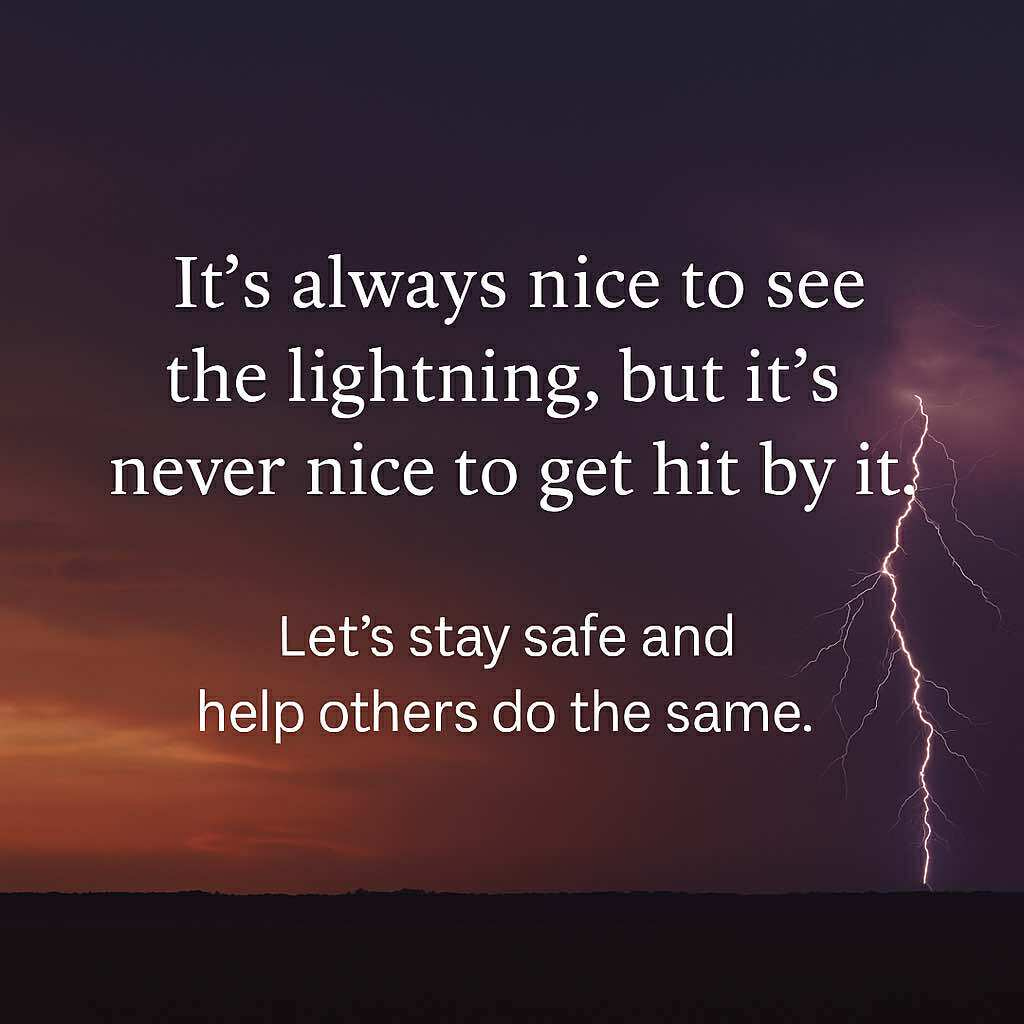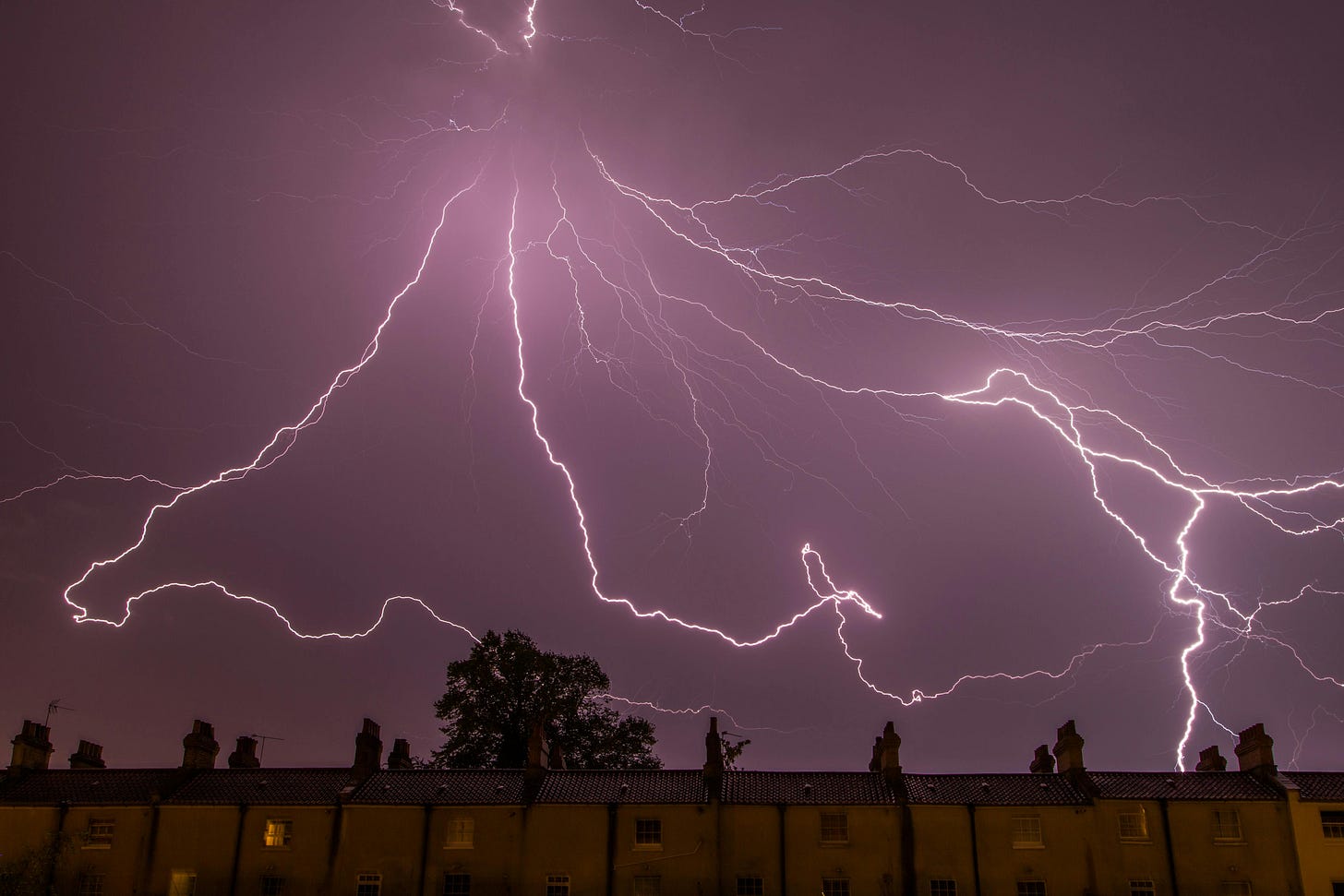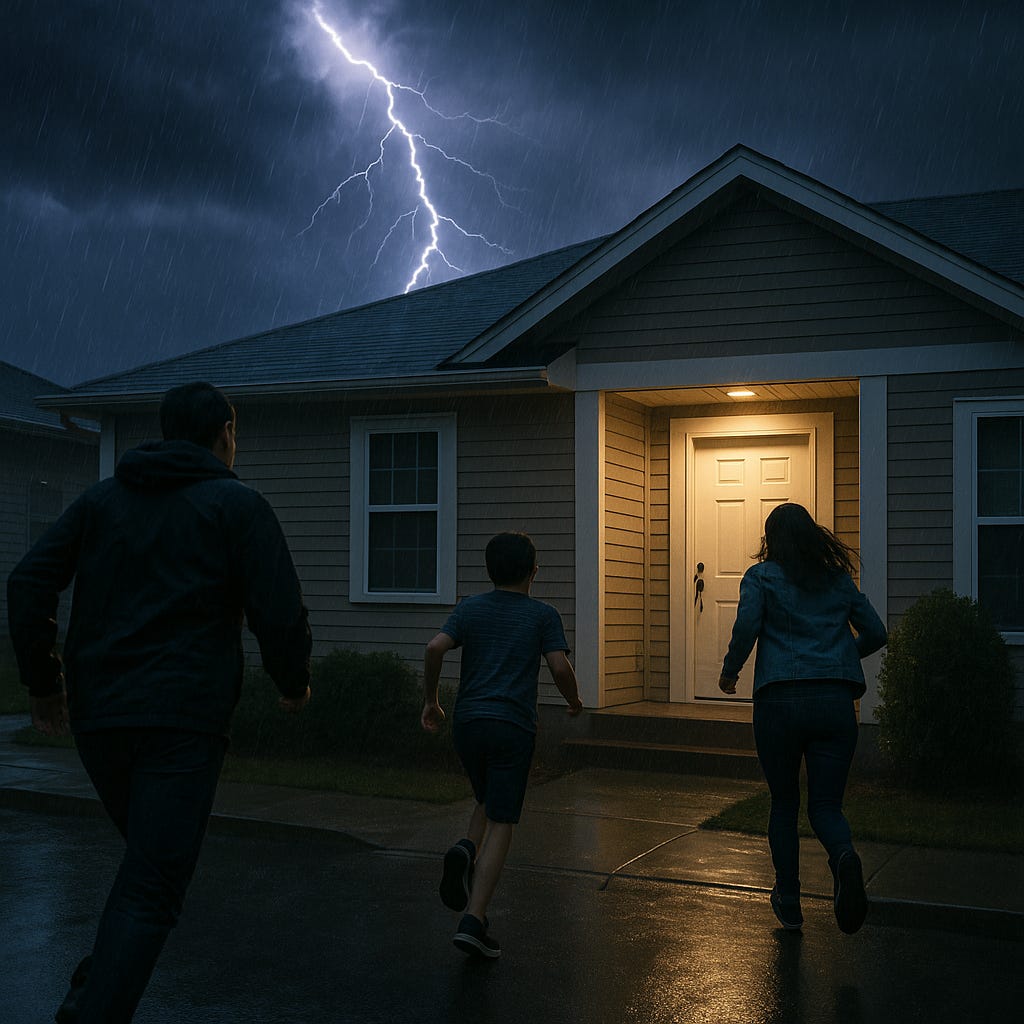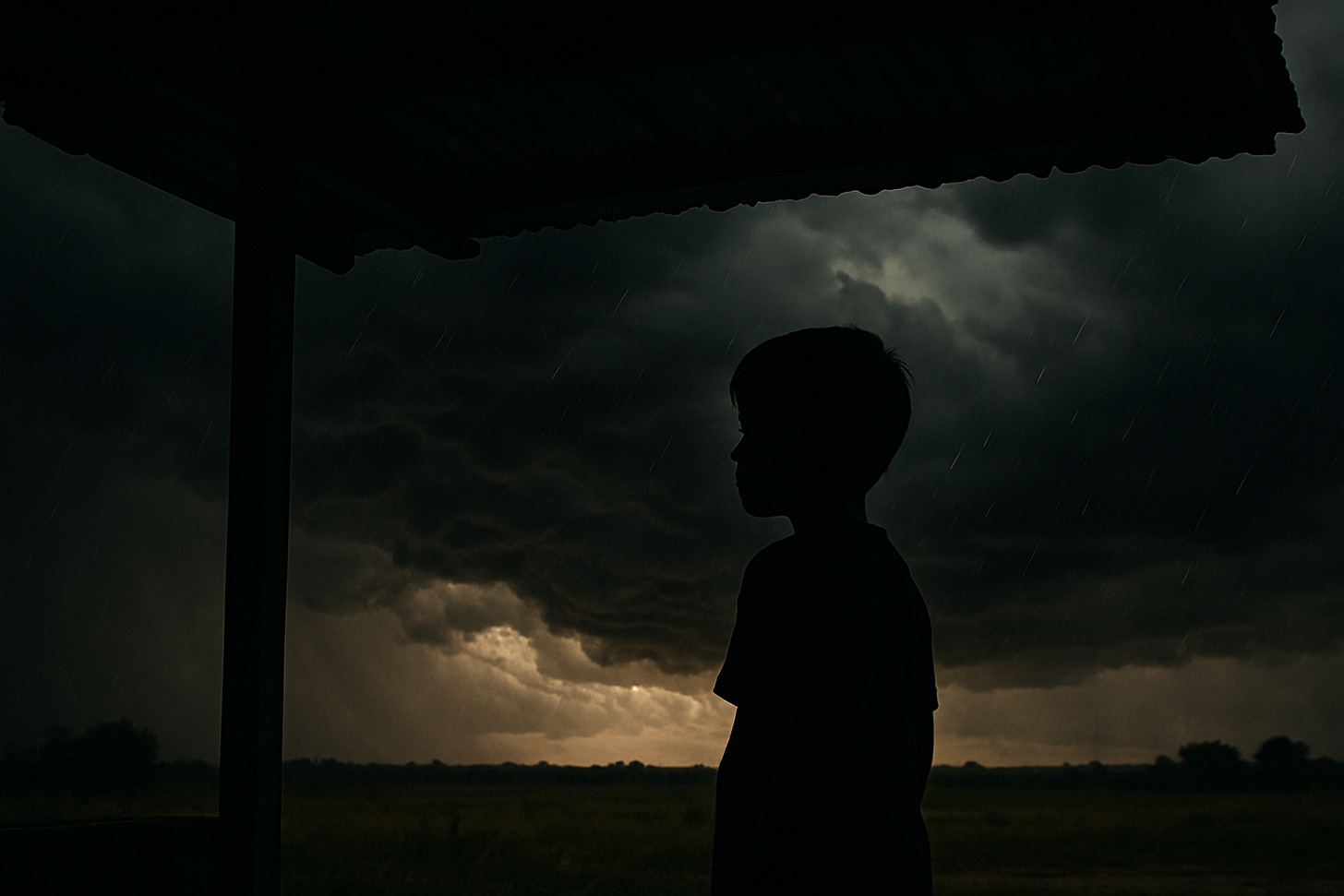⚡ When Thunder Roars, Go Indoors: Staying Safe During Lightning and Thunderstorms
Understanding the Risks of Thunderstorms and Simple Steps to Protect Yourself and Your Loved Ones
Thunderstorms can be beautiful and dramatic—but they are also one of nature’s most dangerous phenomena. Especially in Texas and many other parts of the U.S., lightning storms are common during the warmer months. Understanding how lightning works, the risks it poses, and how to stay safe is essential for protecting ourselves and our loved ones.
🌩 What Are Lightning and Thunder?
Lightning is a powerful electrical discharge that occurs in the atmosphere, typically during thunderstorms. It happens when there is a buildup of electrical charges between the clouds and the ground or within the clouds themselves.
A single lightning bolt can contain up to 1 billion volts of electricity and reach temperatures of 50,000°F (27,760°C)—hotter than the surface of the sun.
Thunder is the sound caused by lightning. When lightning heats the air, it expands explosively and creates a shockwave. That rapid expansion produces the rumbling or cracking sound we recognize as thunder.
If you hear thunder, lightning is close enough to strike—even if you don’t see it.
⚠️ Why You Should Take Lightning Seriously
You might think: “I’m just stepping out of the car for a second,” or “It’s only a light drizzle.” But lightning doesn’t wait.
In the U.S., lightning kills an average of 20 to 25 people each year and injures hundreds more—often during everyday activities like walking, hiking, or playing sports.
According to the National Weather Service, many people struck by lightning were outdoors for just a short time and didn’t realize they were in danger. Texas ranks among the top states for lightning strikes, especially during summer.
🛡️ Lightning Safety: What You Can Do
Taking a few simple steps can drastically reduce your risk. Share these tips with your friends, children, and community to help protect everyone during storm season.
✅ 1. Check the Forecast Before Going Out
Before you leave for work, school, prayers, or outdoor fun—check the weather. If thunderstorms are predicted, plan accordingly or stay alert to quickly find shelter if needed.
✅ 2. When Thunder Roars, Go Indoors
This is the most important rule. If you can hear thunder, you are close enough to be struck by lightning.
Seek shelter in a substantial building (not a tent or shed)
If no buildings are available, your car with a metal roof is the next best option
✅ 3. Avoid Open Areas and Tall Objects
Stay away from:
Open fields, golf courses, and lakes
Hilltops and isolated trees
Metal fences or poles
Electrical towers or water bodies (including swimming pools)
Lightning often strikes the tallest object in the area or anything conductive.
✅ 4. Avoid Unsafe Shelters
Tents, picnic shelters, and small structures do not provide adequate protection. Stay in your car or a sturdy building for at least 30 minutes after the last thunderclap before resuming outdoor activity.
✅ 5. Unplug and Avoid Electrical Items Indoors
Being inside is safer—but indoor lightning risks still exist.
Avoid wired electronics like corded phones and plugged-in computers
Don’t touch plumbing—avoid showers, handwashing, or dishwashing
Learn more from the CDC Lightning Safety Guide.
✅ 6. Educate Children and Teens
Kids and teens are often caught outside during storms. Help them understand the risk—especially during sports or play.
Explore lightning basics for kids on NASA Climate Kids.
🚗 A Quick Jump Can Be Deadly
You may think it’s okay to dash from your car into your house, office, or mosque during a storm—but a lightning bolt can strike in that short sprint. It’s far safer to wait inside your vehicle until the storm passes.
“It’s better to be safe for 5 minutes than sorry for a lifetime.”
🌦 Stay Informed, Stay Safe
Here’s a simple checklist:
☑ Check local weather alerts and radar
☑ Seek shelter when thunder is heard
☑ Wait 30 minutes after the last thunder before heading back out
☑ Avoid risky areas and objects
☑ Teach your family and kids these simple rules
💬 Final Thoughts
It’s always nice to see lightning flashing across the sky—but it is never nice to be struck by it.
If this blog helps even one person become more aware of lightning danger and influences them to stay safe, then the time I spent writing this will be well worth it.
Let’s make safety a shared habit.
👉 Let us know in the comments if this article helped you. And feel free to share your own tips and practices for staying safe during storms—your experiences might just help someone else.
When thunder roars—go indoors. ⚡🏃♂️🏠






